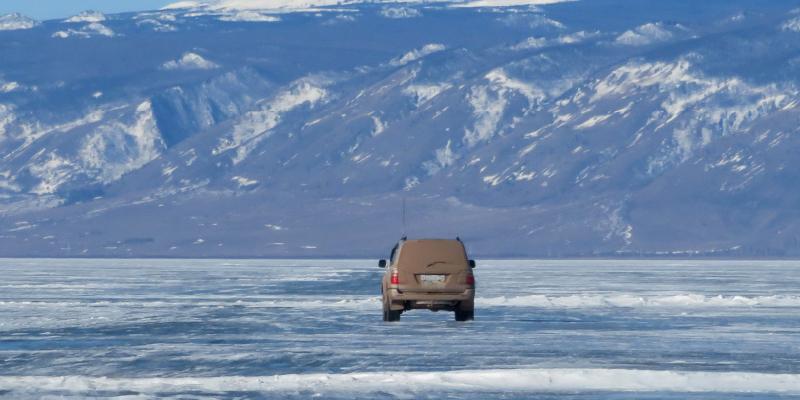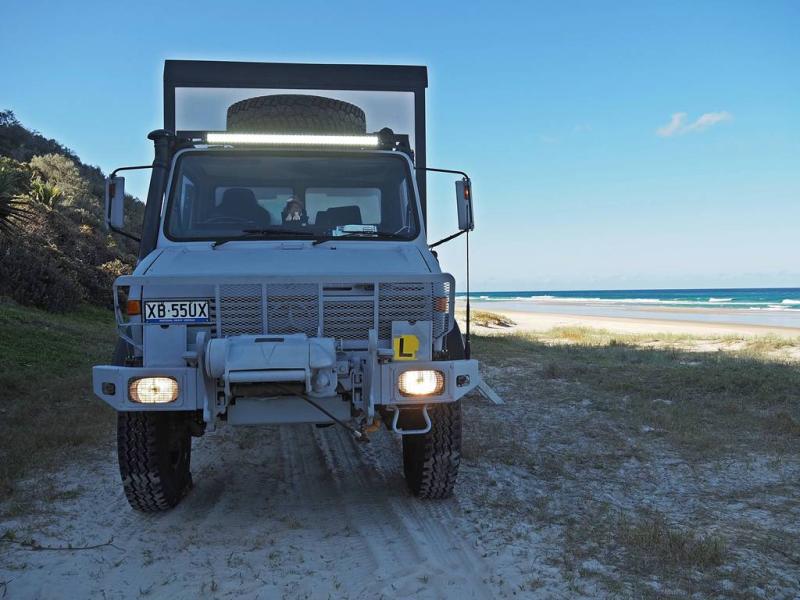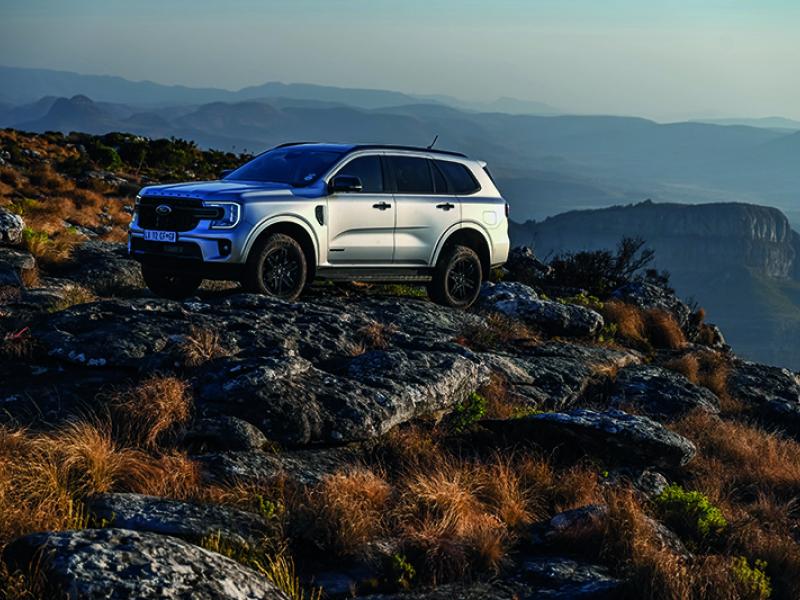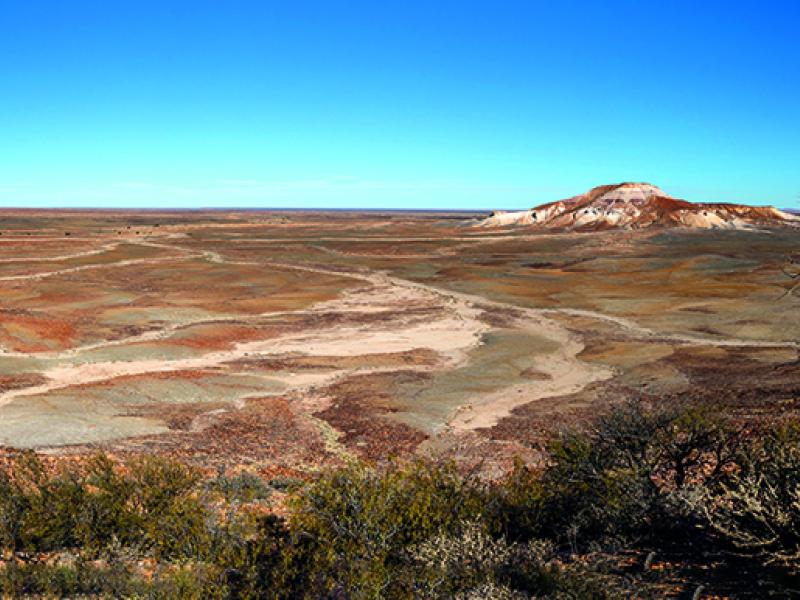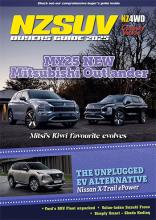The Covid-19 pandemic might have forced them home early but not before Tauranga couple Jeanette and Martin Knudsen had seen and experienced Siberia at its wintry best on one of fellow Kiwi Greg Paul’s 4WD tours.
Greg stood ankle deep in snow, surveying the wooden bridge above the ice-covered stream. There were no railings and fresh snow obscured its doubtful vehicle worthiness. The planks for the tyres were narrow, wide enough for each wheel, with gaping cavities between the planks and little leeway on each side. It was much more sensible, he concluded, to take the track below on the ice over the stream. We breathed a sigh of relief.
He eased his Toyota Land Cruiser down the slope towards the stream, followed by the two other vehicles. The ice covering the stream looked as if it might have been cracked recently, perhaps by a heavy truck. Greg jumped out, stepped onto the ice and stomped across it. Would it hold his vehicle, burdened with its heavy equipment, all three tons of it? Yes, he was sure it would be fine.
Caught in the Ice
Back behind the steering wheel, he slowly guided the vehicle onto the ice. Then it happened – there was a crack and without drama, the Land Cruiser gently sank into the ice. It settled on the bottom of the stream, half a metre deep, the water level with the bottom of the door. Greg shoved it into reverse, but without success. The vehicle would not budge. It was firmly wedged in the stream under the thick shelf of ice.
Greg, Martin and Richard leapt into action. They manoeuvred the winch vehicle into place at the edge of the stream and tied it firmly to the third vehicle. This they then fastened with a rope to a nearby tree, keen to avoid any chance of both vehicles slithering helplessly into the stream to join the submerged one. Richard started the winch, but Greg’s vehicle sat rock-solid in its bed of broken ice.
Olga knew where to find a small but vital piece of equipment, buried under the mountain of handy expedition gear – an axe, useful for hacking the ice. Greg eased himself into the freezing stream and began slashing at the ice behind the vehicle while Martin and Richard heaved the lumps of ice out of the way. Another attempt to winch the vehicle out of the ice was followed by more axe wielding, and yet another winching effort.
The Vast Silent Siberian Wilderness
The minutes ticked by in the vast and silent wilderness of the Siberian tundra. Not another traveller came by. The bright sunshine of midday gave way to cloud and cold as afternoon crept on. The motor of the trapped vehicle came to an ominous halt, its exhaust pipe half buried in water. Greg shivered, drenched to his waist in the icy water – though, in fact, the water was warmer than the atmosphere at minus 18 degrees. We kept our mounting anxiety to ourselves.
More vigorous chopping with the axe and another attempt on the winch. It worked! The imprisoned truck stirred, like a reluctant bear roused from its sleep. Slowly it worked its way out of its icy grave and up on to solid ground. The practical girls among us, Olga and Sue, extricated Greg with difficulty from his trousers and jacket, frozen stiff like sheets of heavy cardboard. Then using the cherished axe to chop up scrubby branches and an old railway sleeper, they lit a fire in the snow to warm him and dry out his clothing a little.
All along I was hoping for a rescue vehicle to miraculously break onto the scene, a large strong Russian monster with plenty of grunt and pulling power. When a vehicle did arrive, it was a diminutive two door Lada Niva, driven by a young Russian who worked as a car deliverer. Before we knew it, he whipped across the bridge we had earlier rejected and asked in Russian if he could be of assistance. I mentally nick-named him Sergei or Ivan. There was a road workers’ station not far down the road which could help to get our vehicle going, he told Olga. Just as he was giving his wisdom on the engine problems, it sprang into life, responding to Greg’s repeated resuscitation efforts.
There was no other way forward than to follow young Ivan’s example across the ‘bridge of rejection’. Greg went first, followed by Richard, with Sue yelling advice about lining up the wheels on the planks. Then it was Martin’s turn. He decided his nerves were not up to it, and persuaded Greg to repeat the drive across the bridge in our car. Martin and Olga walked across the stream on the ice, while I sat beside Greg, eyes tightly shut, too scared to watch the bridge or the scenery below. What a wimp, I decide from the comfort of my NZ home!
Why are we in Siberia?
What were we doing in Eastern Siberia in March 2020 while the rest of the world geared up for Covid 19? We had joined a Rally Tours NZ tour, led by Greg Paul, to follow the Baikal-Amur Mainline (BAM) railway for 3000 kilometres from Tynda in the east to Novosibirsk in central Russia.
Built as an alternative route to the Trans-Siberian Railway, it crosses Eastern Siberia and the Russian Far East, servicing industry especially mining. In 1974 General Secretary Brezhnev announced that the BAM would be built ‘with clean hands only’, without prison labour, and he challenged the Komsomol, the Young Communist League to join in the ‘construction project of the century’. Some 50,000 young people were mobilised to build new settlements, bridges across major rivers and many miles of track. Despite huge cost overruns, poor planning, and a lack of environmental protection, the project was declared complete in 1991.
Much of it is built over permafrost, with inherent problems caused by ice melt and climate change challenges. The BAM road runs beside the railway for much of its distance, built as a service track for the railway. From time to time we eyeball a train engine and its many wagons, us on the road track and the train on the lines a few metres away. Today the road is in a poor state, with many bridges collapsed and impassable swamps and river crossings. Frequently the wooden bridge piles are now collapsed like a heap of straws. On our second day of BAM travel, we negotiate over 200 river bypasses, the bridges too dilapidated to risk using.
However, for enterprising and intrepid four-wheel drivers and their co-pilots, it provides an exciting and challenging track, given an experienced guide like Greg, the right seasonal conditions and sturdy off-road vehicles. The best travel time is February and March, before the spring thaw, while rivers and lakes are still frozen and the tracks are firm and passable.
We join our guides, Greg and Olga, in Tynda, having travelled seven hours from Moscow to Blagovescensk with Siberia Air, and overnight to Tynda by train with Sue and Richard, our fellow travellers. There we meet the team that had driven the BAM eastwards, including Paula and Greg, from our home town of Tauranga. For the next 12 days we drive from Tynda to Irkutsk near the south west corner of Lake Baikal in our three Toyota Land Cruisers.
Well Equipped for the Environment
Our 4WD vehicles sport wonderful winter tyres, the black rubber tread dotted with silver studs which allow us to travel with ease on all surfaces from slushy snow to polished mirror-like ice. It is big business changing tyres according to the seasons and Greg has a summer and a winter set for each vehicle. We are decked out against the cold in thick padded jackets and ski pants. The vehicles are comfortable, outfitted with efficient heaters to cope with the below-freezing temperatures – often minus 15 to 18 degrees, though one day we experience minus 30 degrees. Each morning the guys start their motors half an hour before we leave to warm them up.
Accommodation is always clean and comfortable, sometimes modern and stylish, and sometimes ‘most interesting’. In Khami we have two apartments, four stories up via a dark, bare concrete stairwell in an old Soviet style block, grey and forbidding on the outside but welcoming and warm inside. The colour scheme of browns, oranges, blues and greens and the mixture of textures reminds me of the décor of my grandparents’ home when I was a young child in the 1950s. The inventive plumbing over the bathroom hand basin is amazing – a lemonade bottle – no, I won’t describe it; it’s easier to view a photo!
Sunshine and Snow Slurries
Between Khami and New Chara, we reach the highest point on the BAM road. Snow covered, rounded mountains stretch to the distant horizons, glorious in the early afternoon sunshine. We are told that the spindly black larch trees that look lifeless against the white background, will burst into green life in early summer.
The following day we take a trip from New Chara into the hills, intending to find a closed mine, its town still intact. The sunshine-bathed scenery is a joy to travel in, as we descend what in a month or two will be a flowing waterfall. But soon our vehicles cannot cope with the thick drifts of fresh snow. After several stops to dig the wheels from the snow slurries, we observe the gathering grey clouds to the west and decide it is time to turn back and forgo the mine. Unfortunately more snow at night prevents our planned visit next day to the unusual Chara Sands, an area of golden desert sands surrounded by mountains.
The Thrill of Driving on Ice
The first time we drive onto an iced-over river, it is scary and unnerving. Over the radio, Greg instructs us to undo our seat belts. “Whatever for?” I want to yell. In trepidation, we tentatively follow behind his lead vehicle. In time we relax, trusting that the ice is thick and not about to crack into a thousand pieces. But after the first journey on ice, it is good to be off it and onto dry land again. A few days later we cross the ice of Little Lapindo Lake, with similar scary feelings. It is very windy with ice dust blowing over the surface. We stop and get out of the vehicles but it is very slippery and unsettling.
By the time we reach Lake Baikal, I give myself with enthusiasm to the thrill of driving on the blue ice, spreading many miles out from our vehicle. We enter Lake Baikal near the city of Irkutsk and drive north to the island of Olkhon and to Khuzhir, the largest town, where we stay in a modern pension for two nights, allowing us time to drive on the ice and enjoy the landscapes of the lake. Driving on the ice is an amazing sensation.
Lake Baikal is the largest freshwater lake in the world, containing not quite one quarter of the world’s fresh surface water. With two tourist seasons, winter and summer, it is becoming a popular place for visitors, usually with sizable numbers of European and Chinese tourists. However with Covid-19 over the border to the east, Asian visitors are very few. We are there right at the end of the winter season, and we expect the lake to close to vehicles within the next week or so. At the height of winter, the ice is nearly one and a half metres thick, but by late March, the melt is already underway.
During our full day on Lake Baikal, we travel up the lake for 55 kilometres as far as a meteorological station at the island’s northern end, viewing the ice caves and rock formations along the shore. I walk with great care from the vehicle towards them as the ice is treacherously slippery and I am grateful for my walking stick. As we drive the final 38 kilometres next day to leave the lake, we stop and have a final walk on the wonderful blue ice. Martin and I hold hands and toddle like two old people on the slick glass, relishing the special moment. Well, in fact we are both in our 70s!
School, private home and hot pool visits
The trek across Siberia is not all 4WDing on icy tracks, lakes of ice and rickety wooden bridges. Greg weaves into our itinerary other interesting experiences. One morning we visit a primary school and talk to some of the teaching staff and children. It’s a public holiday in honour of International Women’s Day, but half a dozen students and staff roll up at school to welcome us with conversation and morning tea. We are impressed with the confidence and smattering of English of the children. One evening we visit a local couple in their own residence and enjoy a delicious home-cooked dinner with them. Another time we soak in a hot pool surrounded by snow and ice, revelling in the unique experience.
Then there are sights along the way, like the huge monument erected to celebrate the joining of the two halves of the BAM railway; the nearby railway station was built by Uzbek youth.
We also visit the notorious Kuandinsky or Vitim Bridge across the Vitim River, a major tributary of the Lena River. The old wooden bridge is 570 metres long, 15 metres above the ice, and a mere two metres wide with no railings. In addition, in March the wooden planks are dangerously slippery with ice. Though locals occasionally use the bridge, Greg has no intention of encouraging us to venture on to it and we cross the river on the ice nearby, taking photographs as our memento.
Our journey together finishes in the mid-Siberian city of Irkutsk where Martin and I heed the call of family to return home in case we find ourselves shut out at the border. Together we celebrate the success of our expedition with dinner in a popular and nostalgic 1960s restaurant, leaving the others to finish in Novosibirsk.

